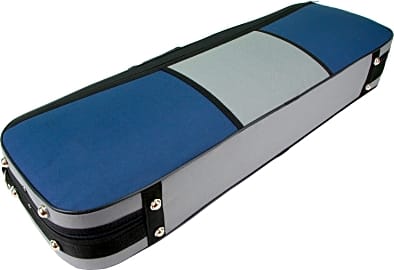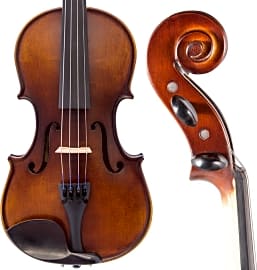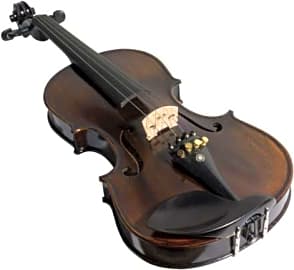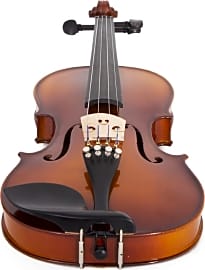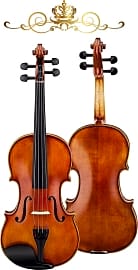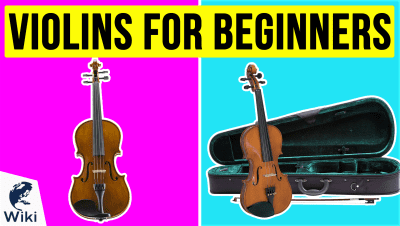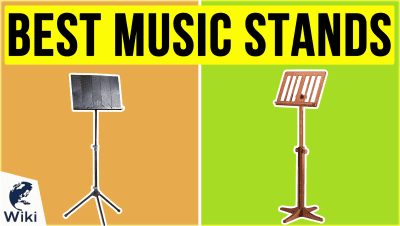The 10 Best Violins

This wiki has been updated 38 times since it was first published in September of 2015. Whether you are just starting out on your musical journey or you are already an accomplished artist, you'll find one of these violins perfect for practicing or for your next performance. We've put together a wide variety of models suited to everyone from beginners to professional musicians, ranked by their tone, build quality, playability, price, and included accessories. When users buy our independently chosen editorial picks, we may earn commissions to help fund the Wiki.
Editor's Notes
January 03, 2020:
With such a wide range of violins available, we decided to stick to 4/4 options throughout the ranking, with some models like the Cecilio CEVN-2BK and the Kennedy Violins Louis Carpini G3 available in various sizes for younger or smaller players of both professional and amateur standing. The Cecilio is the only electric model we included, as we already have a list dedicated to electric violins.
A lot of luthiers utilize similar materials for their offerings, with pro-level and budget options both boasting spruce and maple construction with ebony components. What matters though are things like carving quality, the location from which the wood is sourced, how it's aged and/or dried, etc. Sources like the Italian Alps offer wood that has been traditionally used in violin-making for centuries, so even if a spruce from Canada can make a nearly identical sound to an Italian variety, it's understandable that pros would want something with more historical significance. And luthiers trained in traditions reaching back to those early days of violin construction would likely have more familiarity with finer woods. Some of the most expensive products we included, like the D Z Strad Violin Model 800, utilize this Italian spruce.
Special Honors
Antonio Violins Dolphin This model is one of the top-of-the-line offerings from a company that makes everything from high-grade professional instruments to inexpensive products designed to deliver superb quality to students. This particular choice is made from wood that's been aged between seven and nine years, and is an oil-varnished, faithful reproduction of a famous Stradivarius. antonioviolin.com
The Violin Takes Form
The violin is a descendant of the the viol, an early renaissance instrument.
The violin is a descendant of the the viol, an early renaissance instrument. Other predecessors include the medieval fiddle, rebec, and lira da braccio. Paintings from the era indicate that types of stringed violin instruments were in existence by at least 1520, with the the top E string added shortly after. The viol became an entire class of instruments that includes the violin, cello, and viola.
Italian violin makers such as the Amati family ushered in a new era for the violin. Small family operations such as these were pivotal in establishing the standard proportions of the violin. The Amati family in particular contributed to the art of violin making like none other. These contributions were evident not only in the improvement of the instrument itself, but also in the apprenticeships the family attracted. Renowned makers including Andrea Guarneri and the famous Antonio Stradivari were among their apprentices.
Stradivari is recognized as the greatest violin maker in history and went on to finalize and refine the violin’s form and symmetry. If it was not for the Amati family, Stradivari may never have made the contributions he did. Makers like Stradivari continued to experiment through the 19th century with the size and shape of the violin, adjusting archings, overall length, the angle of the neck, and the bridge height. As the possibilities of the violin expanded, the instrument evolved to meet the requirements of both the soloist and larger concert halls of the day.
By the 19th century, the modern violin had emerged. Its size, length, and balance allowed the player to produce both power and subtlety in the higher ranges. The final addition to the violin was the chin rest, added by Louis Spohr, which made it possible for the player to hold the violin comfortably while playing in the higher positions. This resulted in the rapid advancement of playing technique, allowing the violin to reach its pinnacle as a virtuoso's instrument.
Will Classical Music Make You Smarter?
In societies that value intelligence and cognitive performance, people are constantly looking for ways to increase their brain power. One simple way to rapidly boost cognitive activity may be to simply listen to classical music. This often incorporates specialized time signatures and employs many different brass, woodwind, percussive, and stringed instruments. The intricate melodies and layers developed may actually stretch the brain.
The intricate melodies and layers developed may actually stretch the brain.
While listening to a violin solo is not everyone's idea of a great night, studies show it may actually help improve your ability to be productive. In 1993, Rauscher et. al first coined the term the Mozart effect, after a study they performed indicated that listening to Mozart's sonata for 10 minutes increased the spatial reasoning skills of listeners.
The original findings were heavily criticized, as they were broad and did not account for things such as the appreciation of classical music affecting how much a person's grey matter was stimulated. To circumvent this, a team of researchers played Mozart for groups of rats while they were in the uterus. All factors for the musical bias in humans were thus eliminated, and the groups of rats were then tested for their ability to complete a maze.
The results of the study indicated that subjects who listen to Mozart in the womb showed increasingly higher marks than the control group day after day. This would mean that long term exposure to classical music may have an increased effect on spatial reasoning.
An explanation for these results may be found in the brain activity. Various tests and brain scans have indicated that listening to music activates a wide variety of areas in the brain. Rhythm and pitch are processed by the left side of the brain, whereas timbre and melody are processed by the right. This means the simple act of listening to music activates both sides of the brain, which can increase brain power.
The Benefits Of Playing An Instrument
The benefits of actually playing an instrument far outweigh the benefits of simply listening to them. A team of researchers set out to find the benefits playing music had on young minds. Groups of preschool children were exposed to either six months of basic piano lessons, computer lessons, or no lessons at all.
The benefits of actually playing an instrument far outweigh the benefits of simply listening to them.
Preschool children who were given piano lessons for the duration of the test showed long term increases in the spatial-temporal regions of the brain when compared to all other groups. Their findings suggested that music training produces long-term modifications in the neural circuitry in regions not primarily concerned with music, such as math and science.
A separate study also showed that learning a musical instrument like the violin can actually improve reading, vocabulary, and comprehension scores in as early as primary grade students.
There are also many personal enhancements which come along with mastering an instrument. Instruments take time to learn, and are often difficult. As such, playing an instrument will teach perseverance, discipline, organization, concentration, and even achievement when the instrument is mastered. Playing an instrument also increases hand-eye coordination, encourages self-expression, and can build confidence and a sense of purpose in life.



